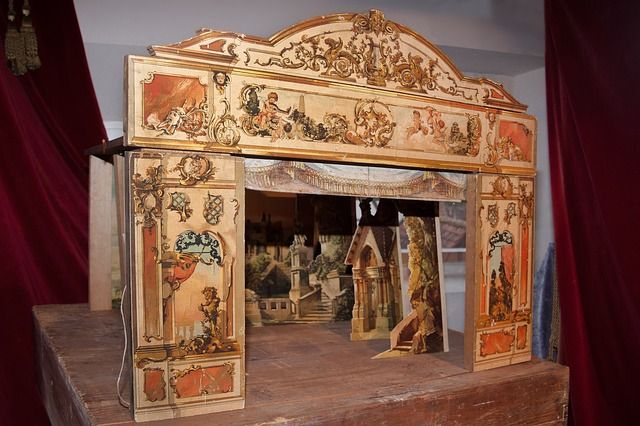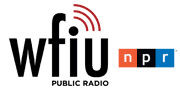
pc: pixabay.com
In classical music, we tend to focus on adults and sophisticates as the listeners of the great symphonies, but children make up a significant portion of classical music listenership as well. This week, we explored the music of children's entertainment on Ether Game.
Sergei Prokofiev (1891-1953) Peter and the Wolf Sergei Prokofiev’s work Peter And The Wolf, dubbed a “symphonic fairy tale for children,” is based on a story and narration that Prokofiev wrote himself, all about a young lad named Peter who defies his grandfather and captures a wolf. He wrote the piece in 1936, just as the Soviet Union was tightening its control over artistic culture. As a result, several Soviet ideals are present in the text—like the idea of the youth defying older generations. Educational children’s music like Peter and the Wolf received a great deal of official support in Soviet Russia. Prokofiev used music to both tell a story that was appealing to kids, while also teaching them about the orchestral instruments that “play” the characters, for example, the flute is the bird, the clarinet is the cat, the horns are the wolf, and the oboe, is the duck.
Victor Herbert (1859-1924) Babes in Toyland: March of the Toys Dublin-born composer Victor Herbert was already known as a composer, especially of works for cello, when he came to the United States in 1886 to join the Metropolitan Opera Orchestra. His reputation today rests on the strength of his 40-plus operettas, including Babes in Toyland, Naughty Marietta, and The Red Mill. “Babes in Toyland” premiered in Chicago in 1903, and was written to follow the success of an extremely popular staging of L. Frank Baum’s The Wizard of Oz. Many are familiar with the March of the Toys, which is often played at Christmas time, as well as Disney’s film adaptation of “Babes in Toyland”. While still retaining the idea of an ensemble cast made entirely of characters from nursery rhymes, the Disney version uses a different plot and only borrows a few songs from the original, such as the “Toyland theme,” and “I Can’t Do the Sum.”
Franz von Suppé (1819-1895) Morning, Noon, and Evening in Vienna: Overture Although Franz von Suppé wrote dozens of operettas, he is perhaps best known for his overtures to Light Cavalry and the Poet and Peasant. A favorite composer of contemporary pops orchestras, Suppé is the earliest Viennese composer of musical farces whose works still survive as viable stage scores. His light and fluent compositional style lent his music easily to the cartoon realm, where it has been featured in animations by Walt Disney and in Fleischer Studios’ Popeye the Sailor Man cartoons. In 1959 Suppé’s overture to A Morning, Noon and Night in Vienna was the work featured in a Bugs Bunny animation entitled Baton Bunny. The short features Bugs as a Stokowski-esque conductor of the The Warner Bros. Symphony Orchestra, in concert at the legendary Hollywood Bowl. Hilarity ensues when a pesky fly distracts Bugs’ conducting. At the conclusion of the piece, Bugs turns to bow in front of an empty Hollywood Bowl, the only applause coming from the fly.
Leopold Mozart (1719-1787) Symphony in C 'The Toy Symphony' Leopold Mozart’s prolific output would have probably earned a fair, yet modest place in the canon, had he not been so vastly overshadowed by son, little Wolfie. Of course, Leopold didn’t mind ceding some of the spotlight to his progeny, but it seems unfair that he lost out on being credited with writing one of his most beloved works to someone unrelated. For many years, Leopold Mozart’s “Toy Symphony” was credited to Franz Joseph Haydn. And to complicate matters, while Leopold wrote the music, the sounds of children’s toys were likely added by Michael Haydn, Joseph’s brother. A typical performance of this work includes the sounds of whistles, rattles, and drums—children’s toys you might find in the 18th century—but this performance was updated to include the sounds of 21th century electronic toys.
Johann Joachim Quantz (1697-1773) Flute Concerto in D: No. 1: Vivace One essential aspect of the popular children’s television show Sesame Street, is to feature a celebrity guest. Many musicians have been featured on the show, including notable classical musicians. James Galway, who we just heard playing a flute concerto, appeared on Sesame Street several times, most notably in a segment where he helps Big Bird introduce the alphabet using the notes of the musical scale. The composer of our selection, Johann Joachim Quantz, was the teacher of Frederick the Great, king of Prussia. Frederick the Great was himself an amature flautist, and Quantz was employed as a composer and teacher in the royal court. He was the only person allowed to criticize the King’s playing, which he would indicate by coughing whenever the king played a wrong note.
Benjamin Britten (1913-1976) NOYE'S FLUDDE: Noye Noye, Take Thou Thy Company Britten believed that a composer should be deeply committed to his or her community. “Noye’s Fludde” is a perfect example: the opera is performed by a mixture of children and adults and is carefully composed for the combined forces of professional and amateur musicians. The text of the work is taken from one of the Chester Miracle Plays. These works, collectively called Mystery Plays, were a popular form of medieval theater in which biblical stories were adapted and performed for the public in their own languages (rather than in the educated language of Latin). The catalog of compositions written by Britten to be performed for children or with children is quite extensive and includes several masses, operas, collections of songs and most famously The Young Person’s Guide to the Orchestra.
Engelbert Humperdinck (1854-1921) Dornroschen: Sleepng Beauty: Prelude Humperdinck had already made a name for himself giving children’s fairy tales the Wagnerian treatment with Hansel and Gretel and several other operas. He was in the middle of writing Konigskinder (or “The Royal Children”) when he was sent a libretto by Berlin children’s book author Elisabeth Ebeling in 1895, with a request to set it to music. Humperdinck was clearly not impressed with her elaborate retelling of “Sleeping Beauty.” He set the libretto aside for several years despite many follow-up letters from Ebeling. It wasn’t until he accepted a position at the Prussian Academy of the Arts and, while moving to Berlin, took up Ebeling’s offer to use her villa as his family’s first residence that he felt obligated to write the opera. Response to the premiere was lukewarm, with most of the praise being given to the extravagantly lavish and complex set pieces. The breadth of the cast is equally as extravagant, with more than thirty individual singing and speaking roles.
Stephen Montague (b.1943) Mirabella a tarantella for solo toy piano Toy instruments have a more significant history in “serious” music than you may think. In the second half of the 18th century, there were several anonymous “toy symphonies” composed near Salzburg for a concertate group of toy instruments—including wooden trumpets, a toy bugle and french horn, rattles and ratchets—along with chamber orchestra. They became more ubiquitous in the late 19th century when all sorts of toy kazoos, glockenspiels, zithers, and mouth organs began to be mass produced. Avant garde composer JOHN CAGE took the toy piano to new heights with his 1948 work Suite for Toy Piano as well as his Music for Amplified Toy Piano from 1960. Since then, music for toy instruments has exploded, with works by George Crumb, Peter Maxwell Davies, Renaud Gagneux, and naturally, Peter Schickele, AKA P. D. Q. Bach. They’re not just for kids anymore.
Fred Rogers (1928-2003) It's You I Like Fans of childhood public media might recognize this tune, and perhaps even the style of the musician performing it, although the lead on this piece was originally sung by Daniel Tiger. Jazz pianist Johnny Costa was the musical director, arranger and on-set keyboardist for Mr. Rogers’ Neighborhood, from the show’s conception in 1968 until his death in 1993. Fred Rogers hired Costa because he believed Costa was the most gifted musician he’d ever heard, and because Costa chose not to simplify any of his arrangements or improvisations for the show, believing that children could recognize good music intuitvly. For this reason the music on Mr. Rogers’ Neighborhood continues to be some of the most sophisticated heard on a children’s television program, with Costa eventually recording an album of arrangements of the songs Rogers wrote for the show. Costa and his Pittsburg-based trio were on set for every taping of Mr’ Rogers neighborhood, which broadcast from WQED Pittsburgh. They performed all of the music live, and provided many of the show’s memorable sound effects, including the trolley whistle.








